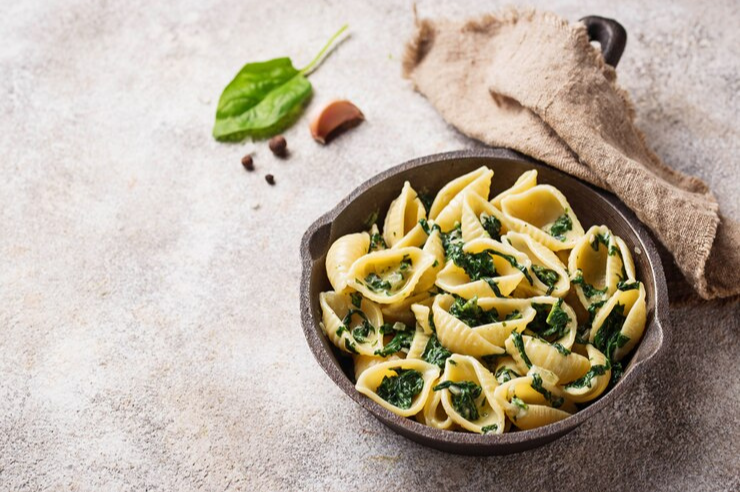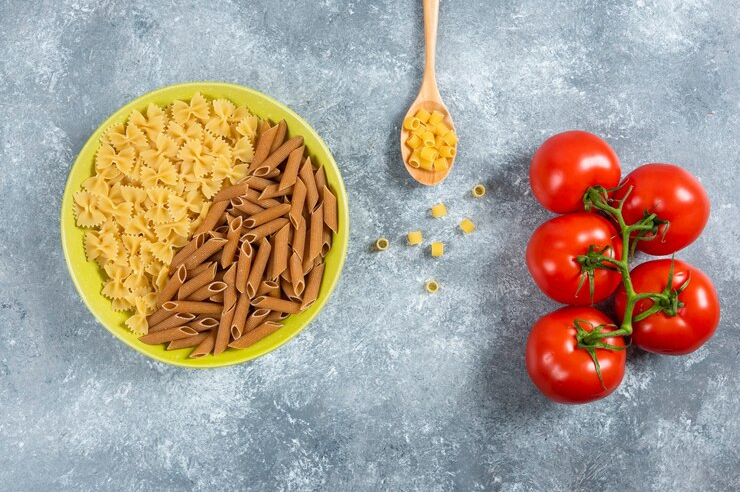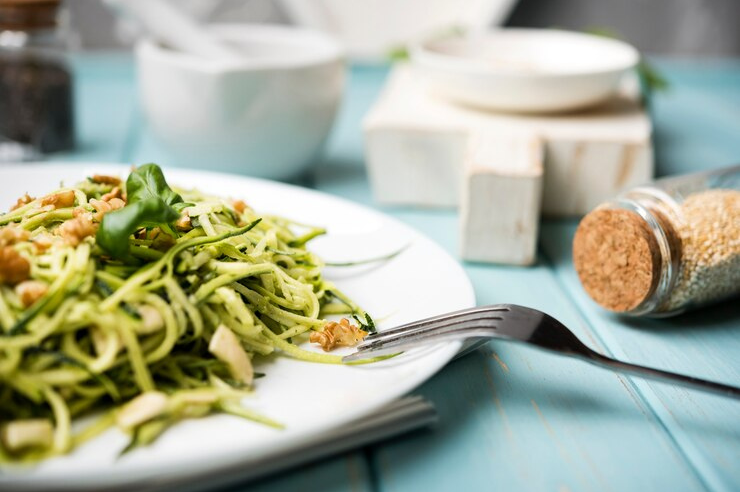Plant-based pasta is quickly becoming a staple in kitchens around the world, offering a delicious, nutritious, and eco-friendly alternative to traditional pasta. As more people shift towards plant-based diets for health or environmental reasons, this innovative pasta option is gaining popularity for its versatility and health benefits. If you haven’t yet embraced the trend, it’s time to dive in—these innovative recipes will have you cooking with plant-based pasta in ways you never imagined.

What is Plant-Based Pasta?
Defining Plant-Based Pasta
Plant-based pasta is exactly what it sounds like—pasta made from plant ingredients, as opposed to traditional pasta made from durum wheat. The appeal lies in its ability to offer a gluten-free, protein-packed, and often nutrient-rich alternative that doesn’t compromise on flavor or texture. Whether made from chickpeas, lentils, quinoa, or even vegetables, plant-based pasta provides an exciting twist on your typical pasta dishes.
Popular Types of Plant-Based Pasta
- Chickpea Pasta: Made from chickpea flour, this pasta is high in protein and fiber, making it a great option for a filling meal.
- Lentil Pasta: Another protein-rich option, made from red or green lentils, offering a slightly earthy flavor and great texture.
- Brown Rice Pasta: A naturally gluten-free pasta that works well for those with sensitivities or preferences against gluten.
- Spiralized Vegetables (Zoodles): Using a spiralizer, vegetables like zucchini or sweet potato are transformed into noodles, providing a lighter, nutrient-dense pasta alternative.
The Health Benefits of Plant-Based Pasta
High Protein and Fiber Content
Unlike traditional pasta, which primarily offers carbohydrates, plant-based pasta is often packed with protein and fiber. Chickpea pasta, for example, contains more than twice the amount of protein and fiber found in regular pasta. The added fiber aids in digestion and helps to keep you feeling full for longer periods.
Gluten-Free Option
For individuals who avoid gluten, plant-based pasta made from lentils, chickpeas, or quinoa is an excellent substitute. These alternatives allow people with gluten intolerance or celiac disease to enjoy pasta without the negative health effects of gluten.
Rich in Nutrients
Plant-based pasta can be rich in vitamins and minerals. For example, lentils and chickpeas are packed with B vitamins, iron, and antioxidants, providing not only a pasta replacement but a boost of nutritional value.

Creative and Innovative Recipes with Plant-Based Pasta
Chickpea Pasta with Lemon-Garlic Pesto and Roasted Vegetables
This recipe takes chickpea pasta to new heights by pairing it with a vibrant lemon-garlic pesto. Roasted vegetables like bell peppers, zucchini, and cherry tomatoes complement the dish with their smoky, caramelized flavors, creating a perfect, nutrient-packed meal.
Recipe:
- Cook chickpea pasta until al dente.
- Blend fresh basil, garlic, lemon zest, olive oil, and roasted pine nuts into a pesto.
- Toss the pasta with the pesto and top with roasted vegetables.
Lentil Pasta Bolognese (Vegan Version)
A vegan spin on a classic Bolognese, this lentil pasta dish uses a hearty tomato sauce made from lentils and mushrooms for a savory, rich texture. It’s perfect for those who want a filling, plant-based version of the classic Italian dish.
Recipe:
- Sauté onions, garlic, carrots, and mushrooms in olive oil.
- Add cooked lentil pasta and a tomato-based sauce.
- Simmer until flavors meld, and finish with fresh parsley.
Zucchini Noodles with Avocado-Cashew Cream Sauce
Perfect for those looking for a lighter option, zucchini noodles (zoodles) pair wonderfully with a creamy avocado-cashew sauce. This dish is dairy-free, gluten-free, and full of flavor, ideal for warm weather or when you need a quick, healthy meal.
Recipe:
- Use a spiralizer to turn zucchini into noodles.
- Blend avocado, cashews, lemon juice, and garlic into a smooth, creamy sauce.
- Toss zoodles with the sauce and garnish with fresh herbs.
Sweet Potato Pasta with Mushroom Stroganoff Sauce
Sweet potato pasta adds a natural sweetness to this dish, while the rich, creamy stroganoff sauce made from mushrooms and cashew cream offers depth and comfort. This is a great recipe for colder months or when you’re craving something rich yet plant-based.
Recipe:
- Cook sweet potato pasta until tender.
- Prepare a creamy stroganoff sauce using sautéed mushrooms, garlic, onions, and cashew cream.
- Toss the pasta in the sauce and serve with a sprinkle of fresh parsley.
How to Cook and Pair Plant-Based Pasta
Cooking Tips for Plant-Based Pasta
Unlike traditional pasta, plant-based pasta can have varying textures and cooking times depending on the ingredients. Chickpea pasta and lentil pasta, for example, cook faster than traditional wheat pasta. Be sure to follow package instructions for the best results, and remember to stir occasionally to avoid sticking.
Best Sauces for Plant-Based Pasta
When it comes to sauces, plant-based pasta pairs well with almost anything. For heartier varieties like lentil or chickpea pasta, try bold tomato-based sauces, vegan pesto, or creamy cashew-based sauces. Lighter pastas like zucchini noodles shine with fresh herb dressings or avocado-based sauces.
Pairing Plant-Based Pasta with Protein and Vegetables
To make a balanced meal, pair your plant based pasta with additional plant proteins like tofu, tempeh, or even roasted chickpeas. You can also add plenty of vegetables—whether sautéed, roasted, or fresh—making sure to incorporate a rainbow of colors for the best nutritional impact.
Why Plant-Based Pasta is the Future of Pasta
The Rise in Demand for Plant-Based Foods
As more people shift towards plant based diets for health, ethical, or environmental reasons, the demand for plant-based pasta is growing. With increased interest in plant based eating, companies are innovating, creating pasta options that are both healthy and sustainable.
The Environmental Impact of Plant-Based Pasta
Switching to plant based pasta can significantly reduce your carbon footprint. Growing crops like chickpeas, lentils, and quinoa require less water and fewer resources than traditional wheat. Additionally, producing plant-based pasta typically results in lower greenhouse gas emissions, making it a more eco-friendly choice.
How Plant-Based Pasta is Changing the Culinary World
Culinary experts and home cooks alike are embracing the versatility of plant based pasta. Chefs are experimenting with new ingredients, creating creative pasta shapes, and introducing unique cooking methods to ensure plant-based pasta dishes have the same texture and richness as their traditional counterparts.
Conclusion
Plant-based pasta isn’t just a trend—it’s a revolution in the world of pasta. Offering health benefits, a lower environmental impact, and endless creative possibilities, it’s no wonder that plant-based pasta is taking the culinary world by storm. With these innovative recipes and helpful tips, you can easily incorporate plant-based pasta into your diet and enjoy all the delicious flavors it has to offer.
Feel free to contact us to find out more about us and our services, explore who we are, or discuss advertising opportunities. Don’t overlook subscribing to our magazine for monthly updates, exclusive insights, and more exciting content!




